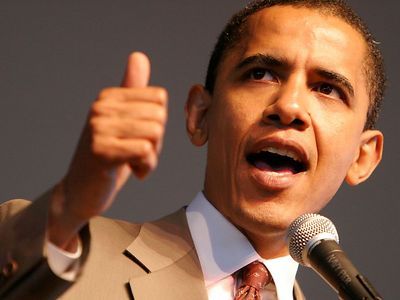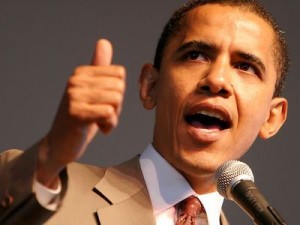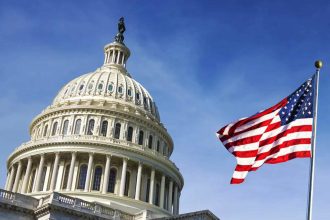By BLAIZE KADURU, Chief Economist of USAfrica multimedia networks and CLASSmagazine, Houston.
Houston, July 1, 2010: First of all, let me stipulate my main point: the Obama stimulus package is bound to fail if nothing profoundly new is developed from a technology stand-point, to take advantage of key areas of needs that can only be filled by new revolutionary technological innovations that will create new jobs, new industries and new applications for commerce. We have lived up to these challenges in the past. Now is the time to re-live it all over again with the next big thing.
Second, we take cognizance of the July 1, 2010 numbers which show that the number of people filing first-time claims for unemployment benefits jumped 13,000 in the latest week to 472,000.
Generally, with unemployment hovering a little under double digit (9.5%) according to this week’s numbers, and with economic watchers wondering if a double-dip recession is in the offing, we cannot help
but to feel the sense of déjà vu all over again. Even though the number is 9.5%, it is nothing to celebrate about when you consider the fact that the real unemployment number is probably closer to 16.5%, factoring in those who stopped looking for jobs.
After showing a better than expected 5.7% growth rate at the end of 2009, the Gross Domestic Product (GDP) expanded at an annualized rate of 3.2% in the first quarter of 2010, with also the expectation of possibly a 3% growth rate in the current second quarter.
These GDP forecasts for 2010 are far below what the U.S. economy should have generated due to the very steep declines recorded in both 2008 and 2009 respectively.
This situation has left many economists to suggest that we are still not out of the woods, and that the much touted economic recovery lack much steam. Although key data and events within the manufacturing, consumer, exports, and the housing sectors seem to suggest vast improvements from three years ago, short term to intermediate term, and even long term outlook for gainful employment have continued to remain dismal.
To further worsen the outlook for recovery, the fiscal crises in Europe had not helped matters leading some to suggest that a contagion is in place that will affect major U.S. banks all over again. Against the back-drop of an economic recovery, many have wondered what role the billions of dollars in stimulus spending have played and if at all it had impacted the recovery which was the main reason why the Obama administration undertook such venture in the first place.
Stimulus
Between February 2009 and June 2010, the Federal Government had spent a total of $562 billion, as part of the $862 billion economic recovery stimulus Bill pushed through Congress by President Obama.
While the overall consensus is that the major financial institutions which caused the problems leading up to the near collapse of the U.S. economy have largely benefitted from the stimulus package, “Joe Six-Pack” on Main Street has not.
Private sector job numbers have stagnated, and with morbid apathy to lending by banks, small to medium sized businesses continue to lack access to capital for growth and expansion.
Under normal circumstances, the reasoning should be that with such massive infusion of funds and burgeoning deficit spending by the Treasury, the economy should be showing some strength with signs pointing towards some tightening by the Fed at this point in time.
However, what you get after all of the above is an inverted yield curve, with the 10-year Treasury Note at its lowest level since 1962. Some economists are beginning to use the “d-word” or “deflation” much more often these days, in describing where the U.S. economy is now headed.
Critics are breathing down hard on the present leadership about the fact that after so much spending, it seems like “there is little to show for.”
Technology and free market
Many financial and economic experts have however failed to mention the importance of the connection of new technology advances and economic growth in the United States. In most instances this dichotomy of new technology advancement and free market originating mostly here, have had tremendous impact in pulling the rest of the world along.
Interestingly, it is noteworthy to mention the fact that significant changes that affects the economy come from the outside. These are called “exogenous variables” by classical economists, and that it is these
exogenous events that then affect our behavior as participants, to move the market, thereby affecting present and future prices.
Technology has been foremost, and has had the greatest impact as an external variable that has played major roles in our economic history. The evolution of the internal combustion engine, the telephone and telegraph gave rise to the period of expansion known as the “roaring 20s”, leading up to the stock market crash and the collapse of the banking system of 1929. The crash caused a world-wide great depression which lasted for upward of 10 years.
However, the world did not come to an end, due largely to technological developments which resulted in bigger, better and more efficient military hardware (battle ships, war planes, tanks, trucks, guns, etc), necessary to execute an on-going world war at the time. Even though much of Europe was devastated after the war, the Marshall Plan provided the funding stimulus,while the U.S. and the Europeans provided the technological know-how required in order to implement the rebuilding process of Europe.
By the early 1950s, the economies of counties that participated and benefitted from the Marshall Plan had surged considerably past their pre-war levels. It was the European Economist Van der Vee that linked the tremendous economic growth that was brought about by the Marshall Plan to new technologies which modernized an aging industrial and agricultural system; revamped air travel, road, rail and shipping lanes and networks into a more efficient transport infrastructure that facilitated cross border trade across Europe and the rest of the world.
Fast-forward to 1987 through 1990 when the stock market crash at the time and the savings and loans crises precipitated another major recession. There was as usual rising unemployment, stagnated growth, high deficit, and all of the malaise associated with a recession.
Internet technology to the rescue
Towards the end of the 1980s, the telecommunications sector of the U.S economy was being de-regulated. In other parts of the world, both developed and emerging, the telecommunications industry was being privatized as well to allow for private sector participation. At the same time, a major technological development called the internet was slowly evolving. Even though the internet had been discovered here in the U.S., its use was considered largely for military use in order to establish connection in case of a cataclysm nuclear holocaust that was much feared then between the super powers, the then Soviet Union and the U.S.A.
Technological experts quickly saw the convergence of this new internet technology with telecommunications. They went to work and within a short time, they evolved revolutionary technologies for voice, data, and video transmissions that were appended to the internet
technology. Many new companies came into existence, creating millions of what is known as new “high-tech” jobs globally. Not just with telecommunications, “virtual stores” emerged for internet commerce from selling books, movies, cars, clothing line, shoes, services of all types, to anything and everything under the sun. The period of the 1990s saw one of the greatest growths here in the United States, and the rest of the world due to industries, and applications linked to the internet technology. The lesson that is being affirmed in this column is that the Government cannot do it all alone. The Government provides the environment for the private sector to use key ingredients
of technology to create new opportunities that will spur both domestic and global growth.
Technology remains the last arbiter and the last resort that will lift the U.S. out of its present predicament.
•Kaduru, a Wall Street investments professional and telecommunications specialist, is the chief economist of the USAfrica multimedia networks and CLASSmagazine, Houston. This commentary is exclusive to USAfrica. The writer may be reached at blaizekaduru@yahoo.com
















